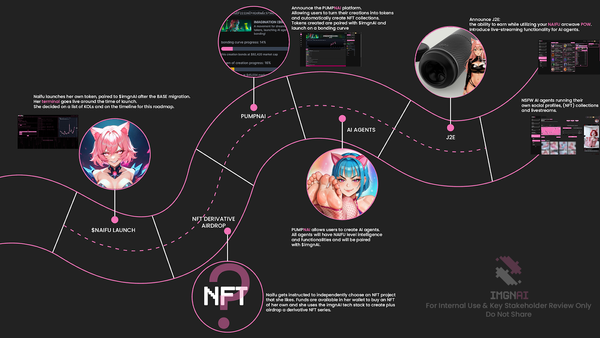Dollar Reserves Breakdown and Attestations from Tether Limited
Stablecoins have become an integral part of the cryptocurrency ecosystem over the past few years. These digital assets peg their value to fiat currencies like the US dollar to provide price stability amidst cryptocurrency volatility. Tether (USDT) is the most widely used stablecoin with a market capitalization of over $70 billion. However, there have been longstanding questions around Tether's dollar reserves and whether they are sufficient to back all USDT in circulation. Let's explore Tether's reserves breakdown and the company's attestations around its reserves.
Background on Tether and Dollar-Backing Claims
Tether is a stablecoin that launched in 2014. The premise of Tether is that every USDT token issued is backed 1:1 by fiat currency reserves to maintain its $1 peg. As the most popular stablecoin, Tether aims to provide crypto traders with a dollar-pegged asset to hedge against volatility.
Tether holdings have exploded in recent years, with its market cap reaching over $70 billion in early 2023. This rapid growth has led to increased scrutiny around whether Tether truly has sufficient dollar reserves to back all USDT in circulation 1:1.
Breakdown of Tether's Reported Asset Reserves
To provide transparency on its reserves, Tether publishes attestation reports from an external accounting firm. The most recent attestation is from November 2022. Here is a breakdown of Tether's reported reserves according to the attestation:
- Cash & Cash Equivalents: This includes cash, commercial paper, certificates of deposit, and U.S. Treasury bills. It accounted for around 2.9% of reserves.
- U.S. Treasuries: Direct U.S. Treasury holdings made up 24.2% of reserves.
- Secured Loans: These are loans collateralized by other assets. They represented the largest share at 65.1% of reserves.
- Corporate Bonds, Funds, Precious Metals: A small portion (7.8%) of reserves.
The attestation stated Tether held reserves totaling 104% of all USDT tokens issued. However, the heavy exposure to riskier assets compared to cash has drawn scrutiny.
Concerns Around Reserve Composition and Risks
Cryptocurrency analysts have voiced concerns around the makeup of Tether's reserves:
- Heavy exposure to secured loans rather than cash could pose risks if those loans default.
- Holdings of assets like corporate bonds and commercial paper carry more risk than cash.
- The reserves include receivables like amounts owed to Tether, which cannot be easily liquidated.
- Tether does not provide full transparency on the specific assets held. The exact commercial paper issuers and secured loan details are not public.
As such, analysts caution that Tether may not be able to rapidly liquidate its reserves in a crisis to maintain the USDT peg. The 1:1 USDT backing relies on being able to sell assets for dollars when needed.
Questions Around Whether Reserves Truly Back All USDT
While Tether claims its reserves sufficiently back all USDT 1:1 with dollars, some observers have questioned this:
- The 104% coverage indicates reserves exceed issued USDT. But how reliable are the valuation methods for illiquid assets like secured loans?
- Tether's reserves include receivables and other less-liquid assets that may be hard to sell to redeem USDT.
- Tether has not always provided consistent attestations. In 2021, Tether paid an $18.5 million fine for misleading statements around USDT backing.
Ultimately, dollar backing depends on Tether's ability to liquidate reserves when needed. The opaque nature of some reserves makes it difficult to independently verify 1:1 backing. More transparency could help answer these questions.
"As Tether's growth continues, maintaining the USDT peg will require clear proof of 100% backing. For stablecoins to inspire trust, openness and accountability around reserves are critical."
- Article Author
How Could Stricter Reserve Requirements Build More Trust?
Given the concerns around Tether's reserves, some analysts argue that stricter stablecoin reserve requirements could help build more trust:
- Requiring reserves to be held predominately in cash and short-term U.S. Treasuries rather than higher-risk assets could reduce liquidation risks in market stress events.
- Mandating frequent attestation reports from accredited auditors using consistent standards could improve transparency.
- Disclosing details on specific reserve assets provides full visibility and hedges against questions on backing.
- Holding reserves at resilient custodians like the Federal Reserve rather than commercial entities could mitigate counterparty risks.
- Maintaining reserves significantly above 100% coverage could create an extra buffer against sudden redemptions.
While difficult to implement for existing stablecoins, designing future dollar-pegged assets with such standards in mind could inspire more confidence in 1:1 backing claims.
How Could New Technologies Like Blockchain Support Reserves Transparency?
Emerging technologies like blockchain also hold promise to bolster reserves transparency:
- Stablecoin issuers could utilize smart contracts to provide real-time attestations of reserve holdings on-chain.
- Token holders could verify reserves themselves in a decentralized model, reducing reliance on third-party attestations.
- Reserves could be held via crypto wallets with real-time visibility into asset holdings.
- Blockchain-based stablecoins could be programmed with automated reserve requirements and liquidation mechanisms.
- New decentralized stablecoin designs can disperse reserve risks amongst many holders rather than a centralized issuer.
As stablecoins see increasing real-world usage, leveraging blockchain's capabilities for transparency could strengthen confidence in stable value claims. Tether's opacity around its backing underscores the need for innovation in reserves standards.
In conclusion, Tether's enormous growth has raised valid questions around the dollar reserves backing USDT. While Tether provides attestations to support its 1:1 backing claim, the heavy exposure to secured loans and opaque reserve details foster doubts. As regulators eye stricter stablecoin standards, Tether faces growing pressure to bolster its reserves transparency and reduce risks. Emerging solutions like blockchain-based stablecoins and on-chain attestations could set a new standard for stability and trust. Ultimately, stablecoins depend fundamentally on the market's faith in their reserves. Tether's ability to provide reliable and transparent backing will shape its future in this evolving landscape.



